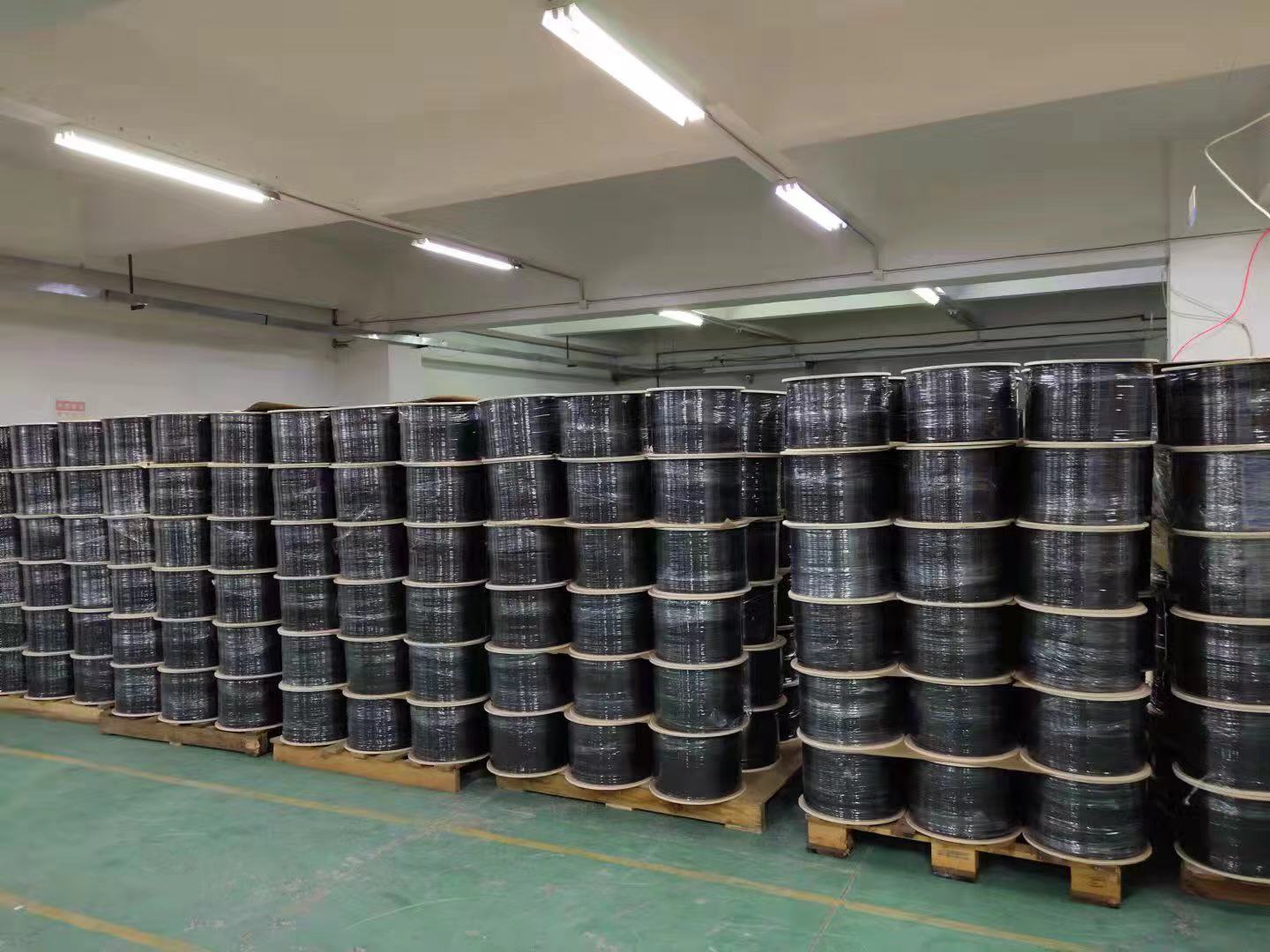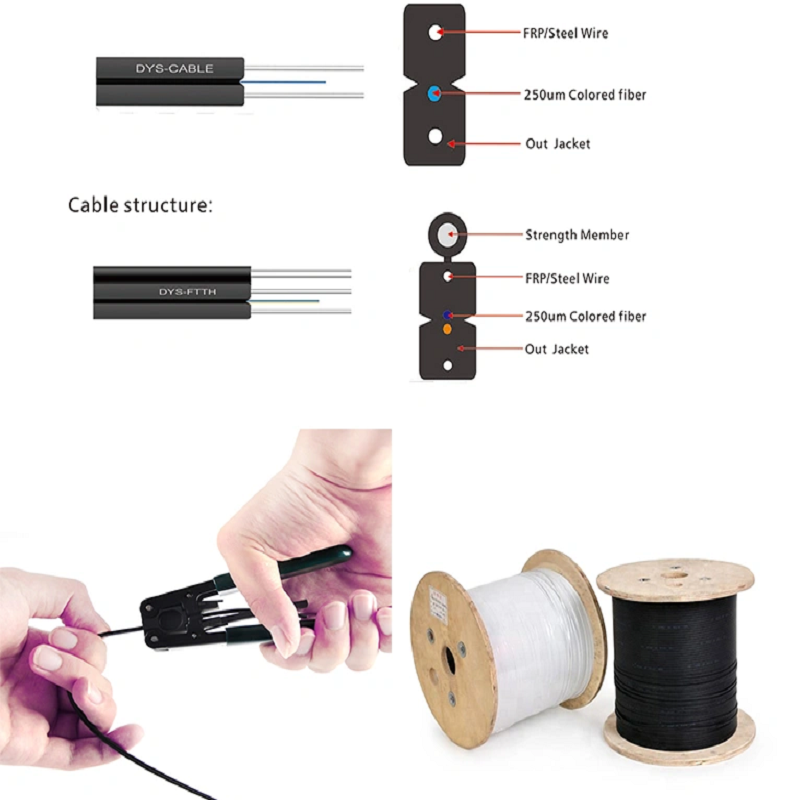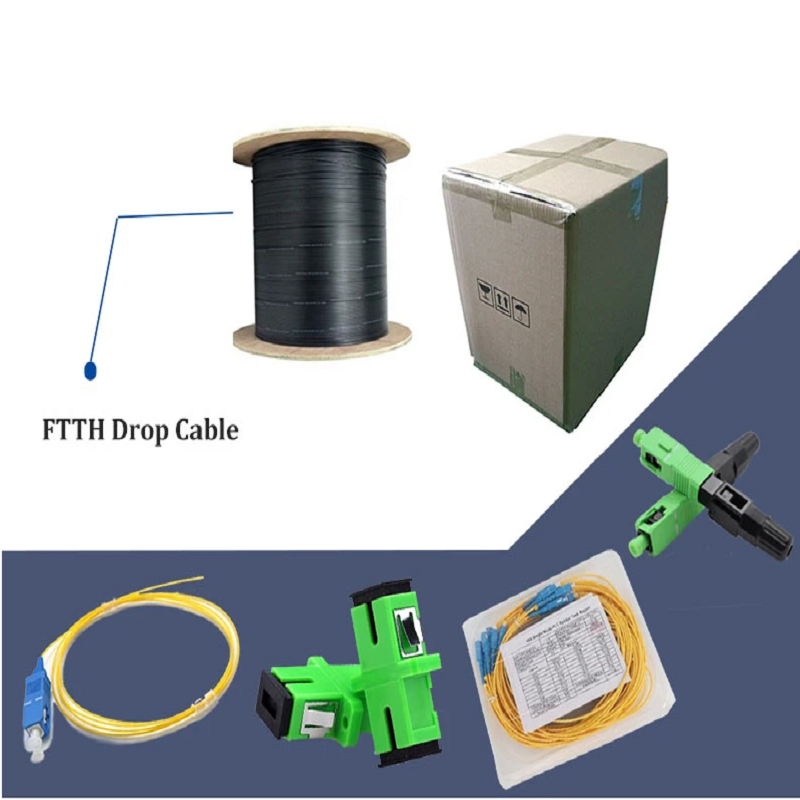 1. Appearance and material
1. Appearance and materialIndoor drop cables are mainly used in indoor environments. They are usually flat or cylindrical in shape, and their outer layer materials are usually PVC or LSZH (low smoke zero halogen) materials. In contrast, the appearance of outdoor drop cables is more robust, usually with a cylindrical structure, and the outer layer material is also made of PE material with UV resistance, waterproof, and corrosion resistance.

Indoor drop cables usually adopt a loose tube structure, that is a layer of plastic tube is put on the outside of the optical fiber, and finally protected with PVC or LSZH material. In contrast, the structure of outdoor drop cables is more complicated, and usually includes a layer of steel wire armor, which can increase the strength of the optical fiber and prevent the optical cable from being damaged by external forces.
3. Use environment
Since indoor drop cables only need to be used in indoor environments, their use environment is not harsh, and they are generally suitable for offices, homes, computer rooms, etc. Outdoor drop cables need to withstand more severe climate environments, such as rain, sunshine, strong winds, low temperatures, etc., so the use conditions of this type of optical cable are more demanding.
4. Scope of application
Indoor drop cables are suitable for indoor wiring and can transmit optical signals within a transmission distance of hundreds of meters. Indoor drop cables are widely used in local area networks, data centers, airports, railways and other fields. In contrast, outdoor drop cables are suitable for outdoor wiring, optical cable channels, urban pipelines and other occasions, and have a wider range of applications.

In short, indoor drop cables and outdoor drop cables are different in appearance, material, structure and use environment. In practical applications, they need to be selected based on specific usage scenarios, transmission distances, environmental conditions and other factors. For general indoor wiring, indoor drop cables can already meet the requirements. In contrast, outdoor drop cables need to withstand more severe climatic conditions and have a wider range of applications.
